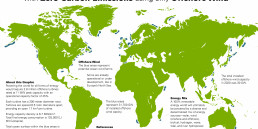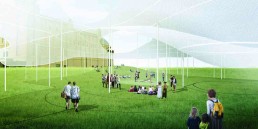How to Power a 2.2 GW A.I. Data Center with Solar Wind & Batteries Alone
There are many ways to power a data center. One of our favorites is the Homegrown Energy proposal by Rewiring America. But what if we want to meet the growth in demand from data centers one-to-one with reliable 24/7 renewable energy? How would we go about doing that? Because we do need to decarbonize our economy after all.
What if you want to power a hyperscale data center without resorting to coal or gas, and you don’t have an mothballed nuclear power plant to fire back up?
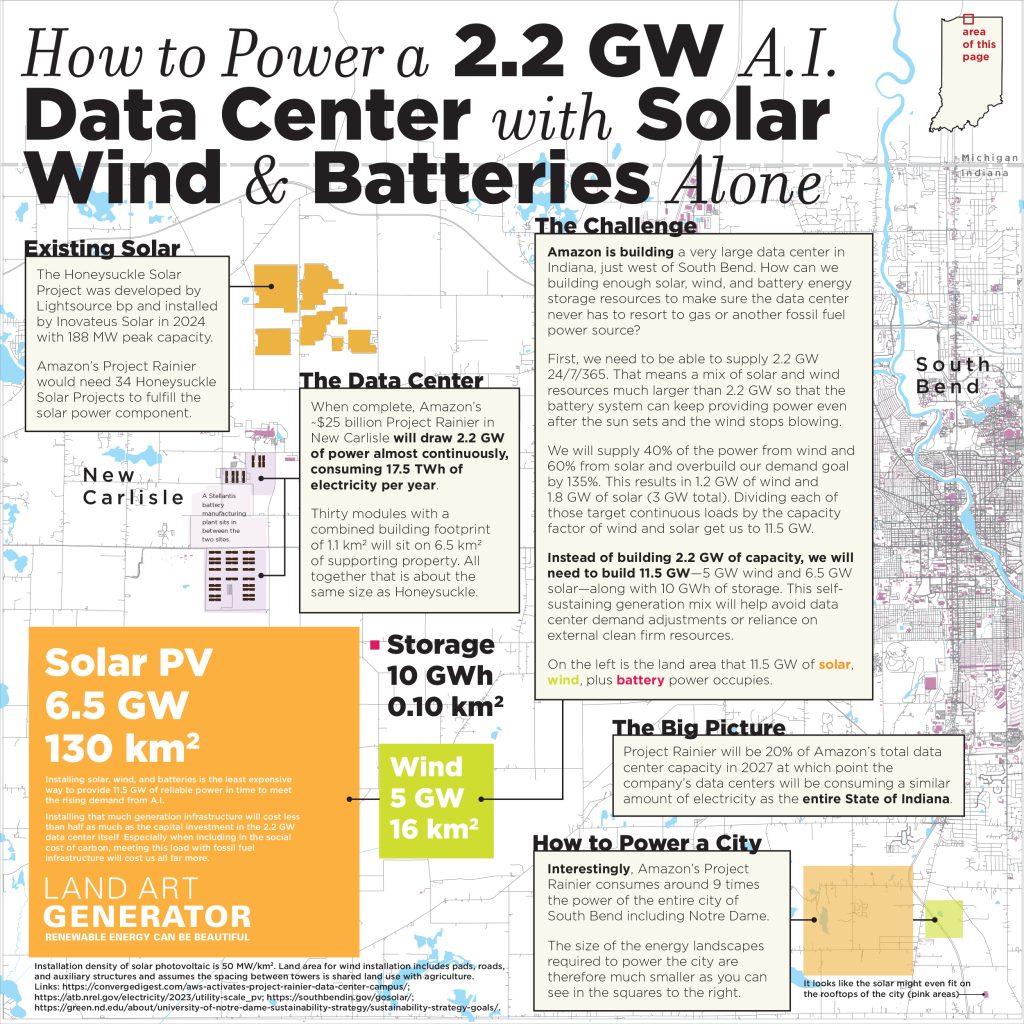
Carbon-Free Data Centers
On the western edge of South Bend, Indiana, Amazon Web Services is building Project Rainier, a 2.2-gigawatt (GW) data-center campus: 30 long, white modules with a price tag in the tens of billions of dollars. When it is complete, Project Rainier will be nearly as large as the entire Amazon data center fleet that existed in 2024, but will likely only make up about 20% of Amazon’s total data center capacity in 2028. By then, Amazon’s total data center fleet will be consuming electricity on the scale of the entire state of Indiana.
We take this single data center campus as a case study and ask: what would it actually take to run Rainier 24/7 on renewables only—no gas peakers in the background, no “clean energy credits” from somewhere else?
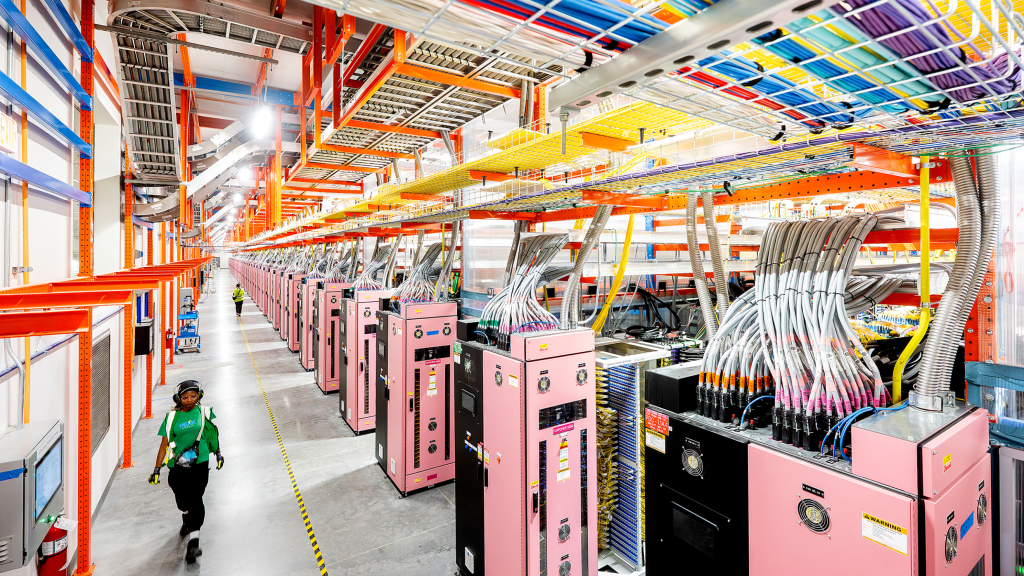
The Data Center: A New Kind of “City”
Rainier is not just another warehouse with servers. At full design load, it will draw 2.2 GW almost continuously, consuming about 17.5 terawatt-hours (TWh) of electricity per year. Its building footprint is about 1.1 km² on 6.5 km² of supporting property—parking, cooling yards, substations, and buffer areas.
To put that in context, that is around nine times the electricity use of the city of South Bend and Notre Dame University combined. In other words: this one campus is an “instant megacity” from the grid’s perspective—except that its demand is 24/7 flat, not a mix of homes, shops, and small industry that pulse with the seasons and the time of day.
Existing Solar: the Nearby Honeysuckle Plant as a Yardstick
Before scaling up to multi-gigawatts, we take a look at something tangible: the Honeysuckle Solar Project outside South Bend.
Honeysuckle is a 188 MW solar farm developed by Lightsource bp and installed by Inovateus Solar in 2024. To supply the solar portion of Rainier’s clean-energy needs, we’d need the equivalent of 34 Honeysuckle-sized projects.
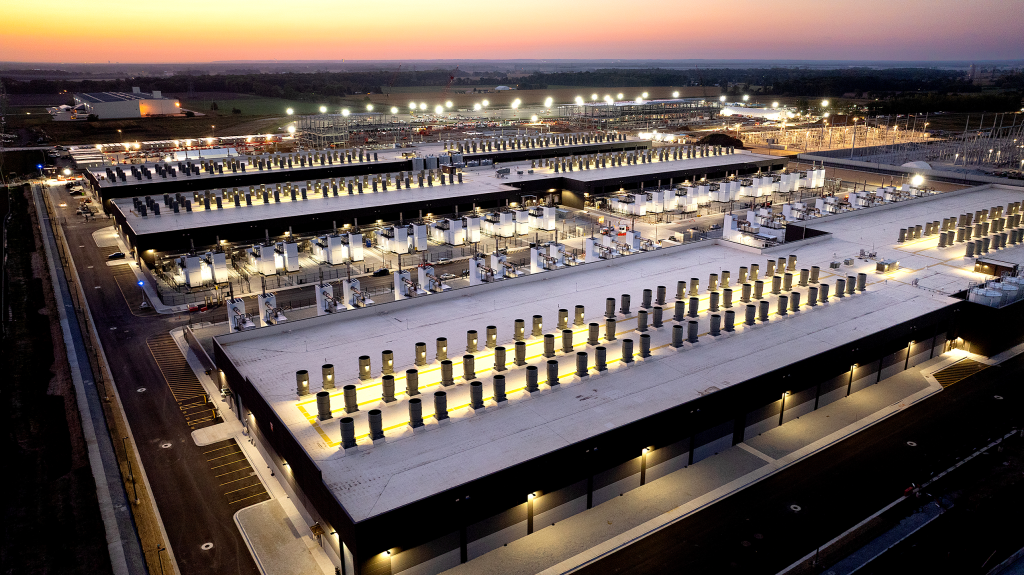
The Challenge: 24/7 Power From Wind, Solar, and Storage Alone
Since we all know the sun sets and the wind doesn’t always blow, how do we power Project Rainier around the clock using only solar PV, wind power, and battery storage—no fossil backup, no imported “clean firm” resources? Because wind and solar are variable, you can’t just match Rainier’s 2.2 GW with 2.2 GW of nameplate capacity.
We assumes Rainier’s demand is essentially flat at 2.2 GW and propose a mix of 60% solar and 40% wind backed up by a utility scale battery energy storage system by energy to supply it. We overbuild total renewable generation so that the average clean supply is roughly 35% higher than the data-center load.
That yields 3 GW of total demand: 1.8 GW average from solar and 1.2 GW average from wind. When you divide those constant power values by realistic capacity factors—lower for solar in Indiana, higher for wind—you arrive at roughly 6.5 GW of solar PV and 5 GW of wind in nameplate terms. Finally, a 10 GWh battery rounds out the system, providing short-term flexibility and cover through evening ramps and short lulls.
This is a deliberately “hard mode” scenario that relies little on grid support. It assumes a lack of access to nuclear, hydro, or geothermal contracts. In practice, hyperscalers like Google and Microsoft can lean on regional grids, geographic diversity, and firm clean resources to achieve 24/7 carbon-free energy with less local overbuild. But the thought experiment is useful because it shows that the actual hardware footprint of trying to go it alone is significant but it is not impossible.
The Land Footprint: Solar Landscapes, Wind Fields, and a Tiny Battery Yard
The bottom left of the graphic turns those capacities into land areas, using established density and land-use numbers drawn from NREL and other sources.
For the 11.5 GW of renewables that back this theoretical carbon-free Project Rainier, about 6.5 GW of solar PV is spread across 130 km² of land (roughly 50 MW/km²), akin to a tightly-designed but possible utility build-out (equal to the module spacing of the Copper Mountain 3 project in Nevada).
About 5 GW of wind, whose pads, access roads, and substations occupy roughly 28 km². The key nuance is that the project envelope is much larger, but over 90% of that land remains in active agricultural use between turbine rows.
Around 10 GWh of lithium-ion storage fits inside 100,000 m² (0.10 km²). That’s less area than the data-center building footprint itself and almost invisible in a regional land-use map. It is interesting to note that the land use density of utility battery energy storage is 1/10th the footprint of the very energy intensive load that it serves.
This pattern mirrors the global picture in our “Land and Ocean Areas to Support a 100% Renewable Energy Economy.”
How to Power a City (and How Much Smaller That Is)
On the right side of the infographic, the same method is applied to South Bend plus Notre Dame as a combined load.
Because the city and campus together use roughly one-ninth the electricity of Project Rainier, the rectangles representing their solar and wind requirements are dramatically smaller. At this scale, South Bend’s solar demand could plausibly be met with rooftop and urban installations.
The Big Picture: Data Centers in the Energy Transition
The last panel of the graphic zooms out: by 2027, Amazon expects Rainier to represent about 20% of its total data-center capacity, and the company’s global data-center fleet will be using a similar amount of electricity as the entire state of Indiana—currently on the order of 99 TWh per year.
If AI demand keeps scaling, the number of Rainier-sized campuses could easily multiply. That raises two linked challenges: Grid adequacy and reliability. Large, flat data-center loads change how grids operate. They increase the need for flexible resources (storage, demand response, clean firm power) and interregional transmission.
Land-use and Design
To meet the ambition of 100% renewable global economy, we can either treat renewable energy as a purely industrial land grab, or we can design energy landscapes that layer agriculture, biodiversity, recreation, parking, rooftops, and public spaces into the same land area.
If we treat these emerging energy landscapes (both the buildings that pull the power and the solar and wind farms that supply it) as blank industrial zones, we miss a huge opportunity to design them as multifunctional, publicly legible places. If we think about land use more holistically, combining art, ecology, agriculture, and infrastructure, we can meet the load of AI and everything else while conserving rural lands and rapidly decarbonizing the economy.
Assumptions:
This thought experiment assumes Project Rainier runs at 2.2 GW continuously, which is a design peak; actual average load may be lower depending on server utilization. That makes the scenario quite conservative. It models a self-sufficient micro-grid, which is not how real hyperscalers currently operate. Companies like Google and Microsoft typically hit 24/7 carbon-free goals with regional grid connections, geographically diverse wind and solar PPAs, contracts for nuclear and hydro, and relatively modest batteries. The land areas are therefore upper-bound illustrations of what would be needed if you tried to isolate a campus and serve it with only wind, solar, and storage. It is important to see the impacts of data center construction, because the cloud is not just up there in the sky, it is whirring in massive energy-hungry buildings in places like New Carlisle.

